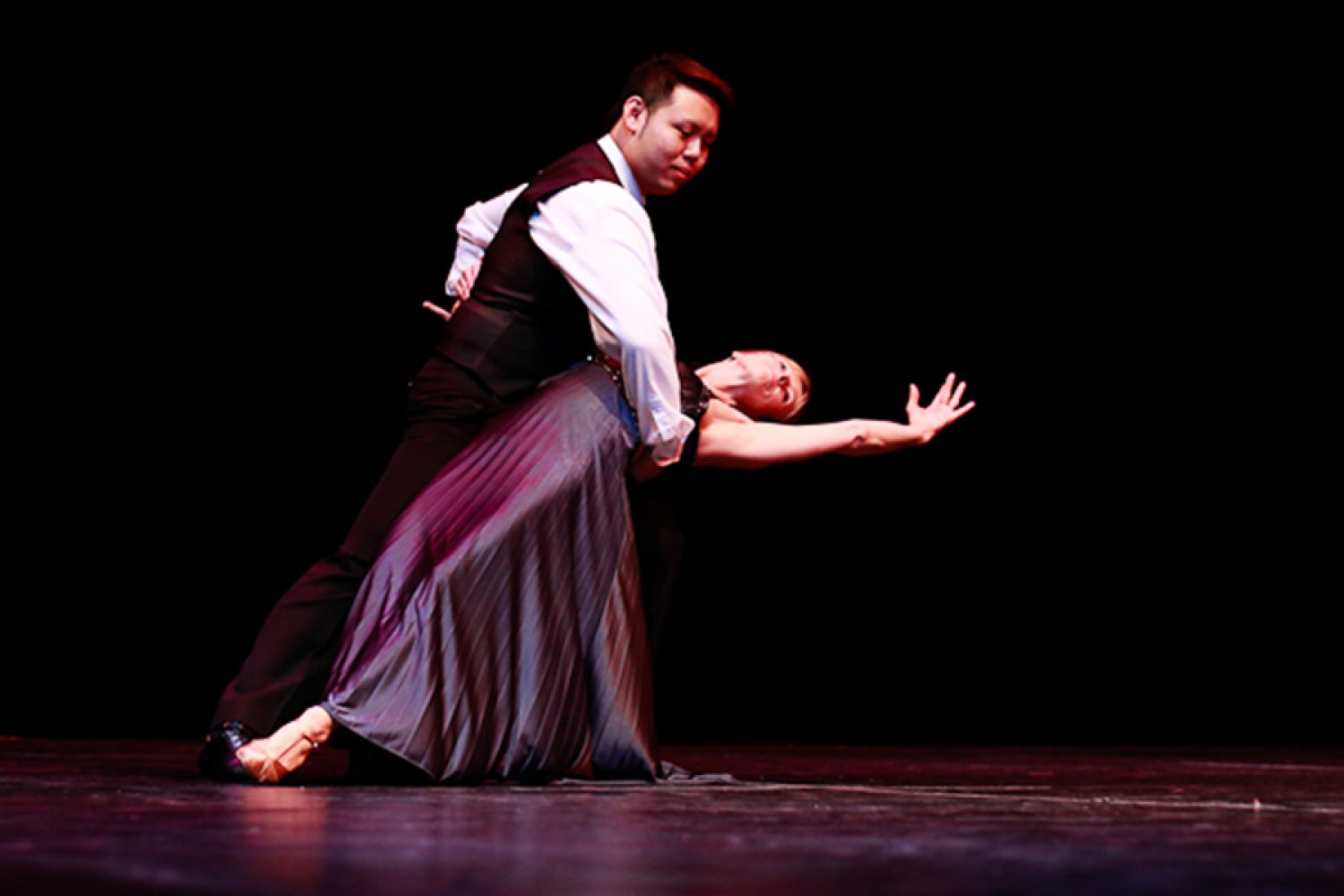So, What is this Ballroom Stuff Anyway? – Part 1

If you’ve never done ballroom before, it may seem a very strange world. If you are a dancer (non-ballroom), you might tend to treat it as choreography” with a “what’s the big deal anyway” thoughts running through your mind. If you have never danced a step in your life, you may not know where to begin. If you are below 30 it might seem like it’s meant for old people – meaning anyone over 30. If you’re over 30 and loving it, well, good for you! So let’s break it down.
First, what is Ballroom Dance?
Without getting into the styles in Ballroom, let’s look at just what “ballroom dance” means. Traditionally ballroom means a partnered dance done by a couple. Dances can include waltz, foxtrot, swing, tango and rumba. Given that it is a couple’s dance, this means there is a leader and a follower. Let me digress for a moment on leader/follower; Typically leader roles are male and follower roles are female however, we at Joy of Dance don’t get hung up on gender. It’s about learning the technique of each so you can understand what your partner has to do and then dance with them easily.
Ballroom is Back
Thanks to shows like So You Think You Can Dance as well as Dancing With The Stars, or the latest Gatsby movie plus artists like Will I AM, ballroom is regaining it’s popularity especially in places like the UK and New York. Why? Because it looks great, it feels great, it’s inherently social and it’s a great way to get your exercise. Ballroom tends to be an all-inclusive term that has many types of dances. Yes, there are dances like Waltz and Foxtrot, however there is also Tango, Latin dances like Cha Cha plus favorites like East and West Coast Swing. Ballroom can be a competitive sport but the social opportunity can’t be ignored. Social dancing is coming back. Clubs that specialize in Swing, Hustle, and Tango etc. are back in style and increasing in numbers.
Ballroom Styles
There is International and American styles of ballroom. Traditionally International has been identified more with competition with the perception of it being more technique focused. American has been and is still seen as more social. As American has grown, so has the attention to it’s technique. What style suits you the best? The best way to find out is to take a sample class at a studio near you, or, maybe go out to a club with friends and see what appeal to you the most.
What we know for sure is that the ability to partner dance well is a definite asset in so many ways: It offers a social network and it helps build poise and confidence, which, by the way, translates into everyday life in myriad ways.
We hope you give it a try. Happy Dancing!


Pingback: So, What is this Ballroom Stuff Anyway? - Part 2 | Joy of Dance
April 13, 2018 1:19 am